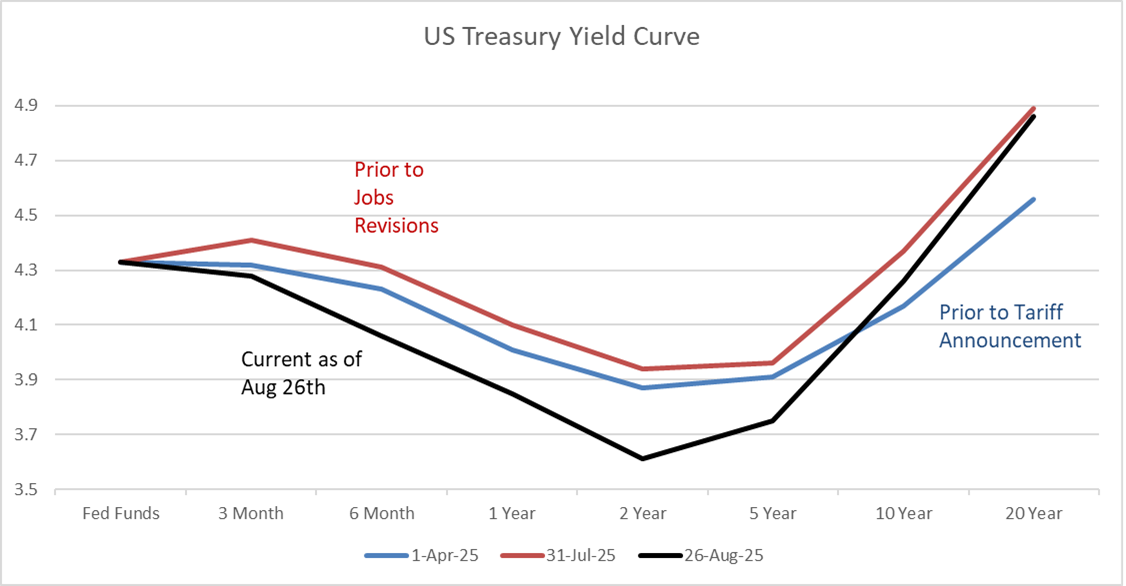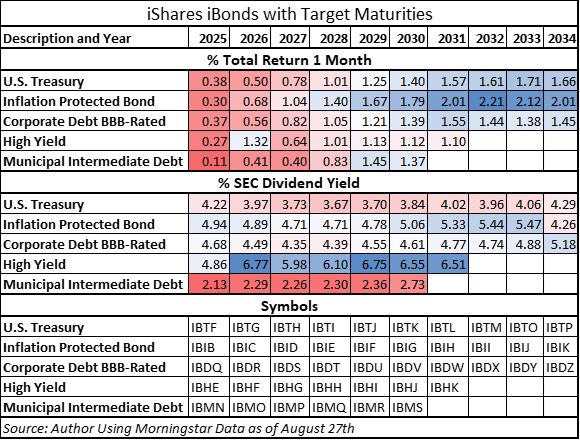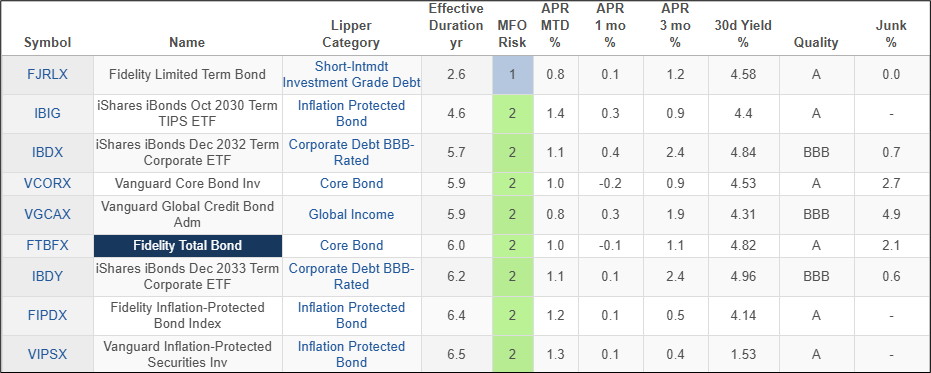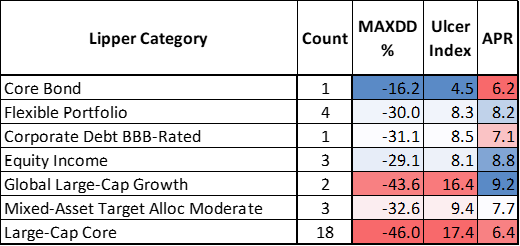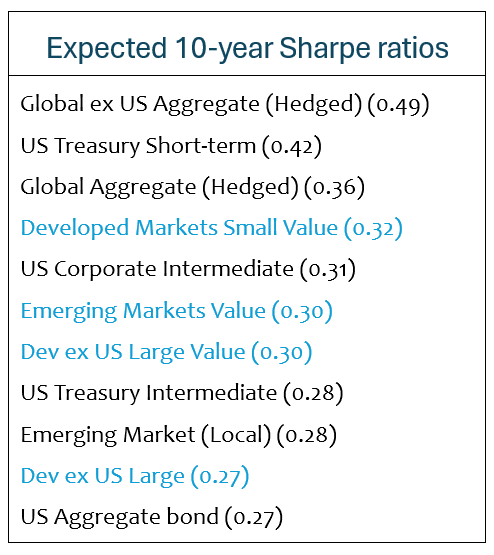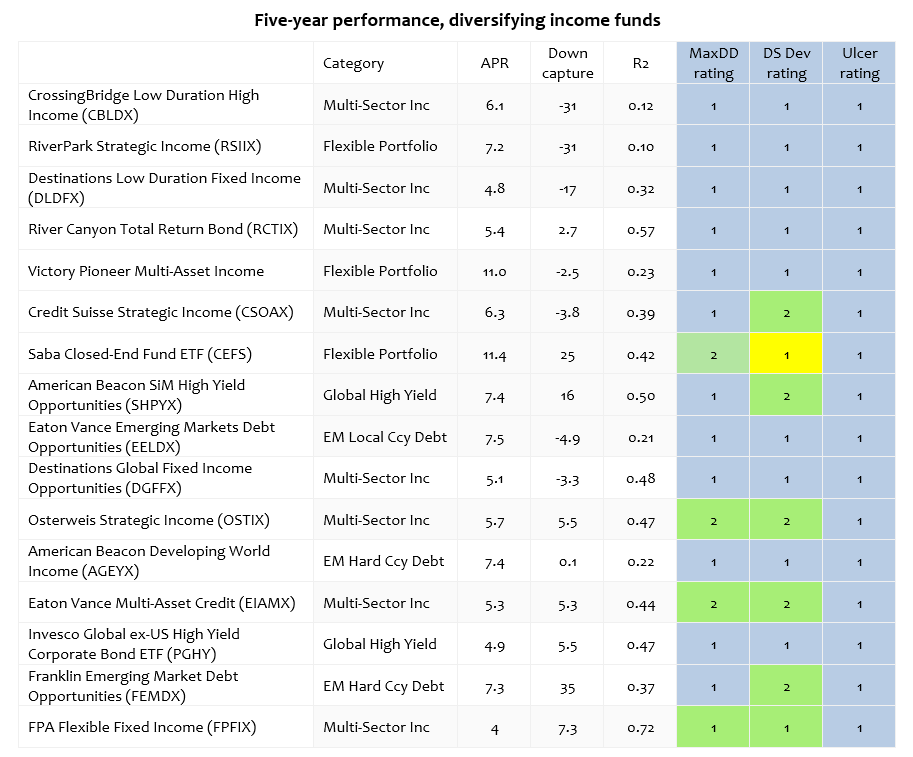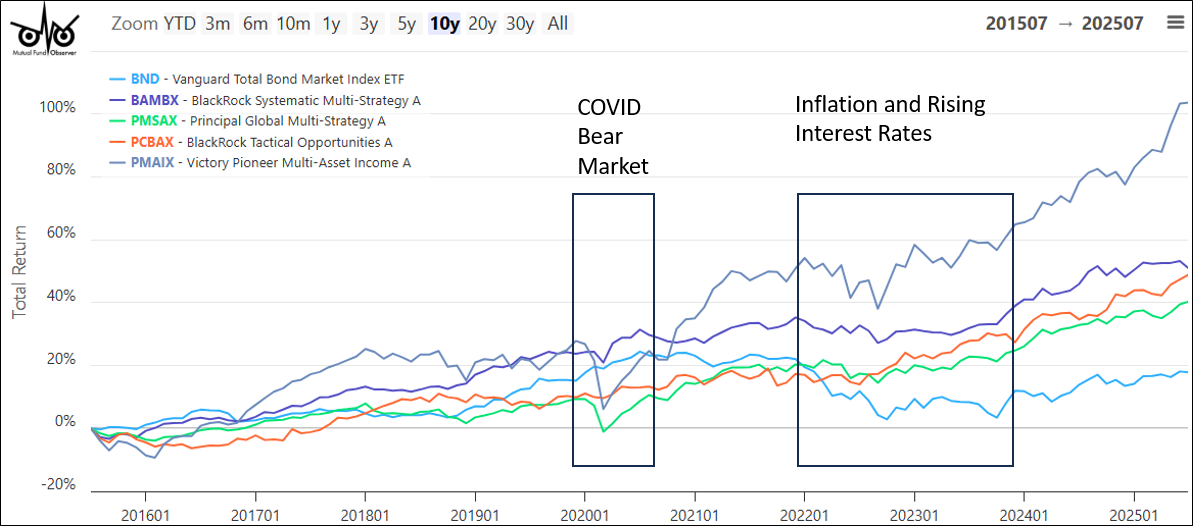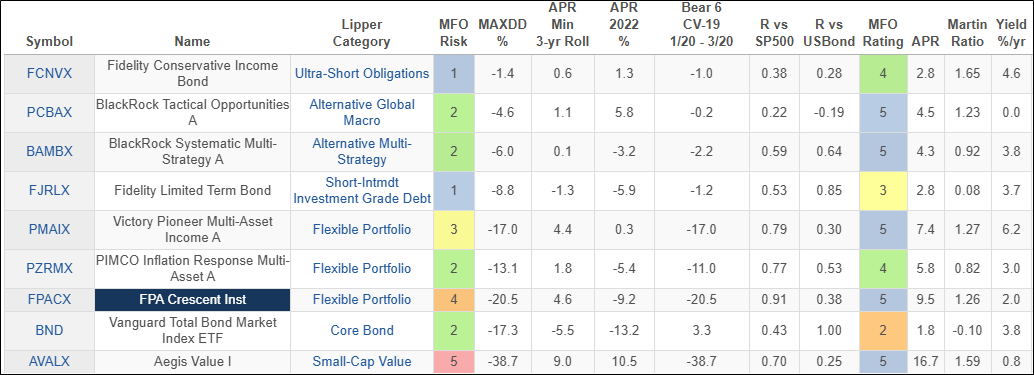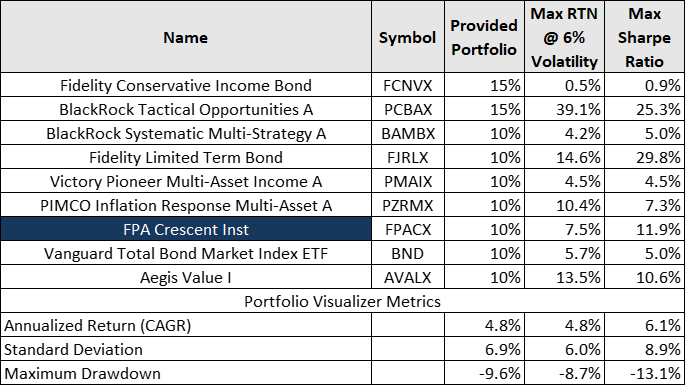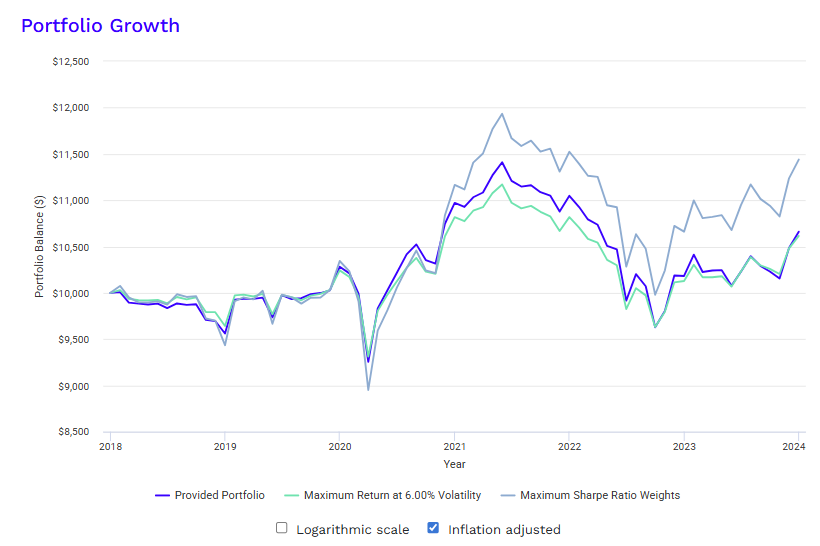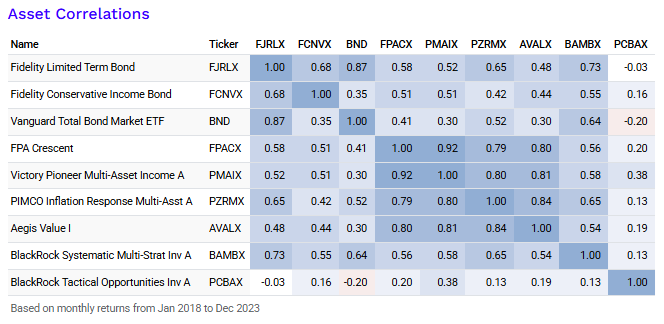Dear friends,
Welcome to the September oh-so-totally back-to-school issue of the Mutual Fund Observer! We’re glad you’re here.
I’ve got the privilege of teaching an Honors section of Introduction to the Liberal Arts for the first time in a quarter century. It’s a delight and a terror. Many of my students, like many of you, start with a mistaken idea of what “the liberal arts” are. They are not “the fusty old white guy stuff that they made me sit through until I could get into my major classes.” (sigh) At their simplest, the liberal arts are all the skills you need to learn in order to make a change in the world; the skills needed to put your principles into practice. My students are learning to listen, respect the opinions of others, state them fairly, and respond to them respectfully, and with as much force as the available evidence permits. They’re learning that they have to earn the right to have their conclusions heard. They’ll learn a bit about their ethical responsibilities when it comes to advancing a cause, a bit about research, a bit about artificial intelligence and the lure of cognitive off-loading … and a bit about apples because it’s fall and I love apples.
They’ll also read Machiavelli, a singularly excellent translation of The Prince by Tim Parks. And you want to know a secret? They’re going to get into it because about 90% of what you’ve heard about “college kids these days” is crap: they’re incredibly bright and willing to speak up, they have a far greater comfort with differences of thought and appearance than I ever did, they’re deeply skeptical of AI, and are ready to go to war against people who disconnect from the world around them by sinking (or syncing) into phones and earbuds.
On this, my 42nd iteration of autumn at Augustana, I’m as hopeful as ever, inspired by their strength and passion. Let’s see how this plays out. I’ll keep you informed.
In this issue of the Observer …
Lynn Bolin examines low-correlation alternatives in “BlackRock Systematic Multi-Strategy (BAMBX) versus BlackRock Tactical Opportunities (PCBAX),” seeking funds that can provide steady 5% returns with minimal correlation to traditional stocks and bonds. Using quantitative analysis and Portfolio Visualizer, he evaluates how these BlackRock funds performed during challenging periods like the COVID bear market and 2022’s dual stock-bond decline. Bolin ultimately favors BAMBX as part of a diversified low-risk sub-portfolio for volatile times ahead.
His companion piece, “Preparing for an Inflection Point on Interest Rates,” responds to recent economic signals, including revised employment data, rising producer prices, and Fed Chair Powell’s Jackson Hole remarks about potential rate cuts. Drawing insights from Kenneth Rogoff’s “Our Dollar, Your Problem,” Lynn anticipates sustained financial volatility, with higher real interest rates and more frequent debt crises. He’s implementing a barbell bond strategy, shifting from short-term to intermediate-duration funds while upgrading to higher-quality bonds and adding inflation protection, preparing for what he sees as a fundamental shift away from the ultra-low rate environment of the past decade.
Both essays reflect Lynn’s methodical preparation for increased economic uncertainty, combining rigorous quantitative analysis with strategic positioning for a changing interest rate environment. They’re worth your time.
I share a Launch Alert for Franklin Multisector Income Fund, which debuted in the last week of August. The fund resonates with Lynn’s concern about finding investments that are insulated from the probable instability ahead, while at the same time offering the prospect of decent returns while we wait. The literature surrounding it got me thinking about the prudence of looking at income funds that were (a) successful and (b) determinedly isolated from the wobbles of the US market, which led us to …
“Thinking more broadly: Bonds beyond vanilla,” in which we launch a systematic (i.e., MFO Premium-driven) search for income-oriented funds that are insulated from the local lunacy. A screen for funds that could invest flexibly, have made 4% or more over the past five years (had you noticed that core bond funds were underwater for the same period?), are uncorrelated with the US bond market, and qualify as MFO Great Owls (a sign of top 20% risk-adjusted returns across a range of examination periods). Sixteen such funds are available to regular investors, a combination of funds that we’ve written a lot about (RiverPark Strategic Income) and ones that we’d never heard of (Saba Closed-End Fund ETF). We give a snapshot of each and hope to profile a substantial number by year’s end. (If one particularly calls to you, drop me a note and I’ll move it up on the to-do list.)
And The Shadow, as ever, tracks down a horde (perhaps a hoard) of industry developments, including a huge number of OEF-to-ETF conversions, two interesting reopenings, and the ongoing flight from funds grappling with climate change. (Pity.)
Two things to be cognizant of
Thing the first: inflation is likely to bite you in the butt sooner than later. Mostly self-inflicted wounds from federal initiatives on tariffs and immigration. Yes, I know, it hasn’t hit yet. That’s due to three short-term factors: people stocked up before Trump’s international goods and services tax took hold, companies have been absorbing the costs of tariffs (which inevitably reduce earnings), and earnings and low energy prices have masked the effects of price increases elsewhere. Goldman Sachs estimates that about 70% of the cost of tariffs will be eventually paid by US households, with the Tax Foundation estimating the cost in the form of higher prices at $1,300 per family.
“This is like when you see a flood coming, the tsunami is coming in, and the water’s gone up two inches,” Robertson warned. (Eva Roytburg, “‘It’s like when you see the tsunami coming in’: Agricultural economists are sounding the alarm about produce prices doubling,” Fortune, 8/28/2025)
The immigration piece (arresting hundreds of Hyundai workers, most recently) will follow the flow of crop harvests and commodity contracts; deportations have thinned the fields, import taxes have been slapped on a vast amount of produce, and producer contracts signed in January 2025 will be renegotiated at year’s end.
Yet these consumers “don’t have a clue what’s going on,” Raymond Robertson, a labor economist at Texas A&M’s Bush School of Government who has advised U.S. agencies on trade and labor policy, told Fortune… The first wave of grocery-price increases will likely hit this winter. Robertson predicted produce prices could rise 50% to 100% by early next year as inventories clear and new contracts kick in. And unlike past decades, when Washington would quietly ease border enforcement to keep fields staffed, today’s political environment suggests no such check. (Fortune, 8/28/2025)
Thing the second: market speculation reached an all-time high in August. That trading is manifested through two sorts of purchases: zero-day options and freakazoid ETFs.
Speculative trading in U.S. equities has surged to historic highs, with retail investors driving activity in ultra-short-term derivatives… [zero-day] options now account for an average of 65% of total S&P 500 options volume in the third quarter of 2025, according to Tier 1 Alpha data shared by The Kobeissi Letter on August 23. For instance, on Thursday, the figure spiked to a record 69%, marking the highest level ever recorded. (Paul L, “Retail stock speculation hits record levels; Incoming market crash?” FinBold, 8/24/2025)
Zero-day options allow you to make wild bets about events that need to happen today, and because they’re cheap, a little down can allow you to make a very large bet that has to be covered or cashed out within hours.
Separately, the ETF industry has continued to spit out a collection of freakazoid crap. (It’s a technical term describing hardly imaginable opportunities to lose money which never should have seen the light of day; think “double reverse 24-hour Tesla” shares.) The riskiest niche funds have seen, collectively, $60 billion in inflows … almost none of it from institutional investors. Institutional investors make up two-thirds of the ETF market, but are virtually absent from these sorts of funds.
“These strategies are incredibly volatile. They’re 99% owned by retail. There are no institutions allocating these strategies, but there’s billions of dollars coming into them,” he added. (Anna Gleason, “This under-the-radar ETF trend may be flashing a warning signal for the market,” CNBC, Aug 23 2025)
How volatile? The YieldMax AI Option Income Strategy ETF is down 52% YTD (per Morningstar, as of 9/8/2025) while its derivative income peers are essentially at zero.
Neither soaring prices nor feverish speculation portend a quiet end of the year, though we have no crystal ball. We do have the same suggestion as ever: get ahead of the crisis. Check your investment plan now, not when the howling begins. Recalibrate to a risk level you’re comfortable with. My Indolent Portfolio, at just 50% stocks, has returned a lovely 11.25% so far this year, which strikes me as entirely excellent for a low-drama, low ulcer strategy.
Kudos to Paul Espinosa, the new co-CIO at Seafarer
Seafarer Capital announced that, effective August 28, 2025, Paul Espinosa was named the firm’s Co-Chief Investment Officer alongside Andrew Foster, its founder.
Paul has been the Lead Portfolio Manager of the Seafarer Overseas Value Fund (our profile is here) since its inception (2016) and a Lead Portfolio Manager of the Seafarer Overseas Growth and Income Fund (since 2018). The remainder of the Value team is Mr. Foster and Brent Clayton.
Seafarer has divided, thoughtfully, the responsibilities between the two:
| CIO Duties and Responsibilities | Responsible Party |
| Human resources management and planning for the investment team | Andrew Foster |
| Firm planning, budgets, and related administration | Joint |
| Development of new investment strategies | Joint |
| Oversight of existing strategies and performance maintenance | Andrew Foster |
| Risk management, portfolio compliance, and ethical controls | Paul Espinosa |
| Research workflow oversight | Joint |
| Research procurement and soft dollars | Andrew Foster |
| Trading and execution | Andrew Foster |
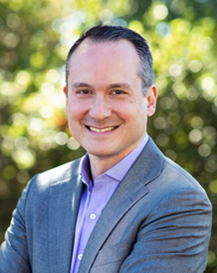 Mr. Espinosa’s role as risk management lead is reflected in the performance of Seafarer Value. It remains striking to us that, amid a revival of interest in emerging markets, the nine-year-old Seafarer Overseas Value Fund remains such a Star in the Shadows with just $125M AUM (though they’ve seen healthy and well-earned inflows in 2025). That’s against amazing raw and risk-adjusted performance, which earned it MFO Great Owl designation (top 20% risk-adjusted returns across multiple measurement periods) and Morningstar’s five-star and Silver ratings.
Mr. Espinosa’s role as risk management lead is reflected in the performance of Seafarer Value. It remains striking to us that, amid a revival of interest in emerging markets, the nine-year-old Seafarer Overseas Value Fund remains such a Star in the Shadows with just $125M AUM (though they’ve seen healthy and well-earned inflows in 2025). That’s against amazing raw and risk-adjusted performance, which earned it MFO Great Owl designation (top 20% risk-adjusted returns across multiple measurement periods) and Morningstar’s five-star and Silver ratings.
How amazing?
Over the past five years, SFVLX has had the fifth-highest raw returns, the highest Sharpe ratio among all diversified EM equity funds (fifth overall with the four higher being single-country funds), and the lowest Ulcer Index. Over the nine years since inception, its Sharpe ratio is #5 and Ulcer Index remains #1.
What does that mean?
In a high volatility asset class such as EM equities, a prudent risk manager is an investor’s most critical resource, and Mr. Espinosa has an almost unparalleled record in that regard. The Ulcer Index is a great measure of it. It factors in two values – how far a fund falls at its worst and how long it takes to recover – which together predict how many ulcers the fund will trigger. Of all diversified EM funds, Seafarer has offered the single smoothest ride over both the past 5- and 9-year periods. Put another way: there is SFVLX and then there are 274 bumpier rides available to you, of which at least 270 would earn you less for the privilege.
That makes Mr. Espinosa’s promotion and assignment to the lead risk manager role sensible and appropriate.
Congratulations.
Buffett turns 95
I aspire to match his 95 years rather more than his $95 billion.
In particular, I envy his continuing mental acuity at 95. He continues to make sense and continues to read 500 pages a day, reputedly, from biographies and investing books to financial statements. His advice to students: “Read 500 pages like this every day. That’s how knowledge works. It builds up, like compound interest. All of you can do it, but I guarantee not many of you will do it.”
The folks at Quartz continually admire a trait that few of his contemporaries manage: consistency. They write:
What stands out at 95 is the throughline: temperament. Buffett ducked the dot-com bust by ignoring what he didn’t understand, then minted billions from Apple once he could frame it as a consumer staple. He bailed out Wall Street with checks that doubled as confidence votes — and collected billions in dividends and warrants for the trouble. He nearly skipped See’s Candies over a $5 million haggling gap, then used it to bankroll acquisitions for decades. For every Apple there’s a Dexter Shoe, but that’s the point: Fortune doesn’t require perfection, just patience and the temperament to keep compounding.
CrossingBridge was right. Big surprise.
John Conner sent out a provocative email, “Still ‘Investing’ in SNAXX?” (8/7/2025). Mr. Conner is an executive vice president at CrossingBridge and asked this question:
Why settle for SNAXX when you really want the whole meal?
SNAXX aka the Schwab Money Market Fund, along with “T-bill-and-chill” and other money market funds can be great for short-term cash needs, but investors have increasingly relied on these types of investments for their longer-term allocations.
SNAXX are fine when you’re hungry…but you might be starving your portfolio.
At CrossingBridge, we think there’s a better option where investors can still prioritize downside risk-management while trying to capture significantly more income.
It is very clear that many Americans have noticed that bank savings accounts are the only game in town that guarantees you will lose money. My Old National Bank basic savings kicks out … ready? 0.01% interest in a world where prices are rising (that is, savings are devaluing) at 3% a year. Kiplinger’s reports that “investors have poured into low-risk money market funds” (7/2025) while Morgan Stanley’s annual money market report notes that folks have placed a record $7 trillion in money markets (Money Market Funds 2025 Outlook, 2/2025). They conclude that the trend toward money market, ultra-short-term bond, and high-yield money market funds has intensified since mid-2024 as traditional insured savings accounts have failed to keep pace with inflation or have offered yields below what can be safely achieved elsewhere.
Enter CrossingBridge Ultra-Short Duration Fund. A really extensive analysis shared by CrossingBridge concludes that across a wide range of time windows and risk-return metrics, CBUDX is a stronger candidate for your strategic cash than a really good money market is.
Curious, we ran a “strategic cash” search through MFO Premium’s huge data screener. What we found was that CrossingBridge and the funds it advises or sub-advises dominate the top of the list. CrossingBridge Ultra-Short Duration and RiverPark Short Term High Yield both clocked in with returns greater than 4% a year, maximum drawdowns of 0.1 – o.2% with a recovery time (that is, how long the 0.1 – 0.2% loss persisted before you were in the black again) of two months. Both funds qualify as MFO Great Owl funds for consistently top 20% risk-adjusted returns across various trailing periods.
Bottom line: there is some money you have to be able to get right now, today, no delay. That’s “immediate cash.” Put that money in an insured checking account, knowing that you don’t mind if it shrinks a bit because you need 100% liquidity to … you know, buy groceries.
“Strategic cash” is intended for situations where a brief delay (a day or two, perhaps a week) is acceptable, allowing for better yields or returns with minimal risk. “You’re gonna need those brakes replaced before the holidays” might be a strategic cash target.
At least the research available to us suggests that a money market is better than a savings account for that role, and that the CrossingBridge / RiverPark funds are better than a money market.
A reminder to Akre Focus shareholders and their friends
Only 23% of shareholders have voted on the conversion of Akre Fund to Akre Focus ETF as of our last contact with the adviser. Hmmm … the conversion will likely lower your expenses and your tax bill, guys. It’s worth your while to take the 30 seconds to log in and vote on the matter. Just sayin’.
Thanks, as ever …
To the steady contributors who help us keep the lights on and our spirits up: the good folks at S&F Investment Advisors, Wilson, Greg, William, William, Stephen, Brian, David, Doug, and Altaf. We’ll totally Fika with you ASAP!
Special thanks go to John from Washington, Robert from Pawtucket, and Frederic from Wisconsin (thanks for the kind words, we raise a lower slice of cheddar in your honor).



